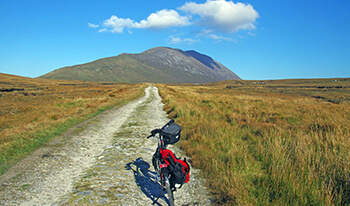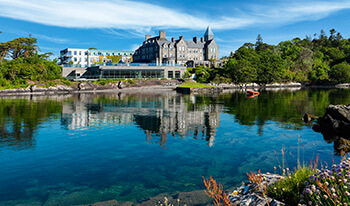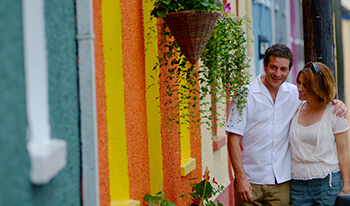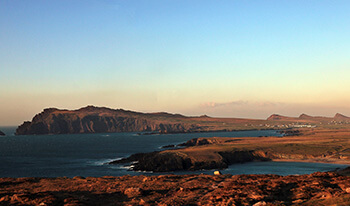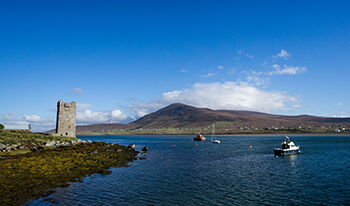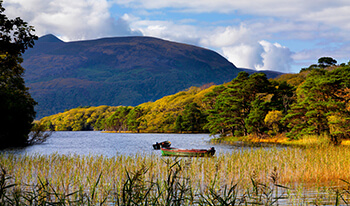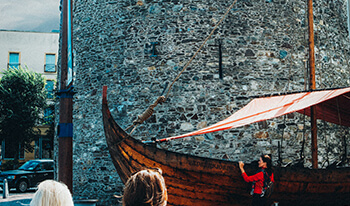Kenmare (Irish: An Neidín) is a small town in the south of County Kerry, Ireland. The Irish name for the town 'An Neidín' translates into English as 'The Little Nest'. The name Kenmare is the anglicised form of Ceann Mhara "head of the sea", which refers to the furthest point inland reached by the sea. Kenmare is located at the head of Kenmare Bay sometimes called the Kenmare River (An Ribhéar) where the Roughty River (An Ruachtach) flows into the sea, and at the junction of the Iveragh Peninsula and the Beara Peninsula. The traditional Irish name of the bay was Inbhear Scéine from the celtic inver, which is recorded in the 11th Century narrative Lebor Gabála Érenn as the arrival point of the mythological Irish ancestor Partholón. It is also located near the MacGillycuddy's Reeks, Mangerton Mountain and Caha Mountains and is a popular hillwalking destination. The entire area was granted to the English scientist, Sir William Petty by Oliver Cromwell as part payment for completing the mapping of Ireland, the Down Survey in 1656. He laid out the modern town circa 1670. Like William Petty, a previous surveyor of Ireland (1584), Sir Valentine Browne, ancestor of the Earl of Kenmare was granted some lands in County Kerry during the resulting plantation, the Munster Plantation.
However, the area has more ancient roots. One of the largest stone circles in the south-west of Ireland[1] is close to the town, and shows occupation in the area going back to the Bronze Age (2,200-500 B.C), when it was constructed. The circle has 15 stones around the circumference with a boulder dolmen in the centre.
Vikings are said to have raided the area around the town which at that time was called Ceann Mhara, which means "head of the sea" in Irish.
The convent in the town, the Poor Clare Sisters, was founded in 1861 by Sister Mary Frances Cusack, who was also an author and publisher of many books. Under the guidance of Mother Abbess O'Hagan it started in 1864 a lace-working industry and Kenmare Lace became noted worldwide.
A suspension bridge, which is claimed to be the first in Ireland, over the Kenmare River was opened in 1841 and served the community till 1932 when it was replaced by a new concrete bridge.
The town is noted for receiving Ireland's tidiest town award in 2000 and being a runner-up in 2003 and 2008. The Catholic Church in the town contains stained glass from Franz Mayer & Co.
